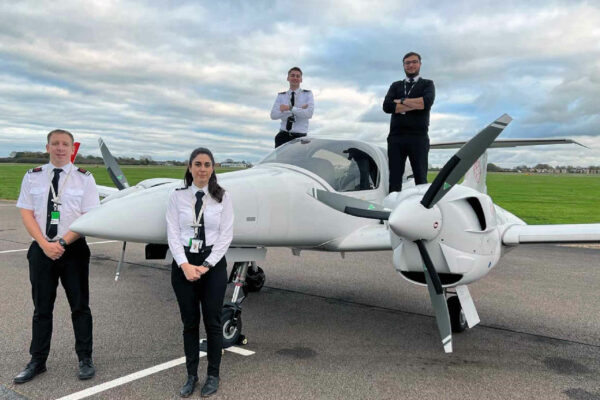An aviation acquaintance recently gave me a ring to ask about incident and accident reporting requirements – a little mishap had happened at a local airfield and although there were no injuries, the aircraft was damaged.
The pilot was not sure whether it met the threshold of contacting the AAIB or whether an MOR (mandatory occurrence report) was required.
Listening to the description I was not sure either – I do not carry the exact ICAO accident and serious incident definitions around in my head and I suspect neither do most pilots.
Similarly, the list of incidents that warrant an MOR is long and sometimes subjective. Having looked through the little guide towards the back of the Skyway Code I suggested this was probably serious incident territory, and to therefore give the Branch a call and see what it said.
I did cover this subject a couple of years ago, but since it is rare that GA pilots need to give it much thought, a refresh may be welcome.
Accidents and serious incidents
Accidents and serious incidents must be reported to the AAIB. It has a 24-hour number: currently 01252 512299. The full accident definition is quite long and if required, you should refer to the AAIB website for guidance. Essentially an accident occurs when someone is on board an aircraft for the purpose of flight and in association with the operation of that aircraft:
· Someone is killed or seriously injured
· The aircraft sustains damage which adversely affects its structural strength, performance or flight characteristics, or
· The aircraft is missing.
Relating to damage, there are exclusions from the definition such as failure or damage to a single engine or propeller of the aircraft and minor damage to components such as wing tips, wheels, fairings or panels. Serious injury is also defined in more detail. As well as AAIB, the police should be informed of an accident.
‘Serious incident’ is more subjective – it is essentially an incident in which there was a high probability of an accident. The severity of the error or hazard involved can be the same, just without the accident outcome.
Clearly not every scenario can be specified in regulation, but the AAIB lists some examples on its website, which include gross failure to achieve normal aircraft performance or controlled flight into terrain only narrowly avoided. A runway excursion, for example, even without damage to the aircraft, would be a serious incident.
Mandatory occurrence reports
Sitting below accidents and serious incidents (albeit with some overlap with the latter) is the ‘mandatory occurrence report’ (MOR). The UK still participates in the ‘ECCAIRS 2’ reporting system and this is used for filing MORs.
MORs go to the CAA rather than AAIB and guidance on this process is available at caa.co.uk/cap382. CAP382 was the pre-ECCAIRS MOR guide and the CAA retained the number for user familiarity.
There is a GA section in the relevant regulation, which is more condensed than those applicable to larger aircraft. Some key occurrence types include (some paraphrased or omitted):
* Fire
* Loss of control
* Failure to achieve normal performance in take-off, climb or landing
* Runway incursion or excursion
* Collision or near collision on the ground or in the air
* Unintended entry to IMC
* Structural or flight control failure
* Engine or other severe mechanical failure
* Fluid leakage that hazards the aircraft
* Pilot incapacitation
* Severe turbulence that caused injuries or required a check for damage
* Lighting strike that caused damage
* Severe icing (including carb) that endangers the aircraft
* External interference such as from RPAS or lasers
* Airspace infringement
* Any incident that involved the declaration of an emergency
If the incident occurs while working or operating for an aviation organisation that has a formal reporting system, the report should be filed via the organisation, which in turn should process it correctly into the MOR system.
Note that any incident in which someone perceived an actual or potential hazard to aviation safety can be reported, regardless of whether it falls within the scope of MOR. A report outside the scope of MOR is known as a ‘Voluntary Occurrence Report’ (VOR) and the process of submitting one is the same.
There is some overlap with serious incidents and MORs, so if in doubt report to AAIB and submit an MOR as well. Occurrences that happen abroad should be reported in the same manner (the ECCAIRS form will take the relevant location information).
If you think it might be a serious incident or accident, the equivalent of the AAIB in the relevant state should also be contacted.
Why report?
The UK CAA receives around 30,000 occurrence reports a year. I suspect many of these are from organisations involved in commercial aviation, which have a more prescriptive list of occurrences that need reporting.
Major airlines might process hundreds of reports a week. Reporting is encouraged and most organisations will have a ‘Just Culture’ policy ensuring that reported errors and omissions are treated fairly.
Organisations also have an interest in maintaining a reporting culture, since they are accountable for the actions of their employees or agents.
For GA pilots it’s more subjective – while the MOR regulations are law, for occurrences in which there is no physical damage or injury, it is reliant on the good faith of the pilot to report.
The benefit to an individual of doing so might seem questionable – what difference will it make? This is hard to answer but one of the key arguments for the European MOR system was more evidence-based regulation and active safety analysis. It may be that the CAA does not do anything solely in relation to your report, but it goes into a wider picture of data.
Commercial aviation has learned over the years that trends towards certain occurrences are often precursors to more serious incidents in the future.
“MOR regulations are law, but where no physical damage or injury occurs, it is reliant on the good faith of the pilot to report”
Looking at it from another angle, if there are any witnesses or other agents involved in the occurrence, then the motivation to report is clearer. Aviation is a small world and something that goes unreported may come to the attention of the regulator via other means.
Putting in an MOR as soon as possible gets your side of the story in the system, for example in the case of an airspace infringement.
Airprox
Airproxes are a particular category of occurrence that have a specialist review board for investigation – the UK Airprox Board. An Airprox is defined by ICAO as ‘A situation in which, in the opinion of the pilot or a controller, the distance between aircraft, as well as their relative positions and speed, was such that the safety of the aircraft involved was, or may have been compromised’.
Clearly that is a potentially broad definition, but many GA pilots will instinctively know when they have been involved in an Airprox. Airprox reports are published in a deidentified manner and often make interesting reading.
Learning from others
One of the developments from the European MOR regulations (that continue in UK law) was the restriction on publishing deidentified occurrence reports that have come through the MOR system. I can see arguments both ways on this issue, but I think the old CAA approach struck a reasonable balance.
It is still possible to apply for access to certain occurrence information, but it must be for purpose of flight safety – caa.co.uk/cap382 gives more details.
CHIRP – the confidential human factors incident reporting programme is a good supplementary option for sharing incidents or observations relevant to aviation safety.
Unlike MORs, CHIRP does publish deidentified reports in a digest around four times a year with some commentary and trend analysis. I always find these interesting, so as well as submitting an occurrence report to the CAA, you may also wish to write to CHIRP with your story.
Update: The original article may have implied that an MOR is not necessary when the AAIB have been contacted regarding an accident or serious incident. If the pilot in command is fit to do so, an MOR must also be submitted for any accident or serious incident, via the MOR reporting portal. Other stakeholders, such as aerodrome managers or organisational personnel should report any relevant accidents or serious incidents via the portal or their organisational reporting system, as applicable.
More info:
· AAIB· caa.co.uk/mor or caa.co.uk/cap382
· Aviationreporting.eu
· Chirp.co.uk
· Skyway Code (p142)







